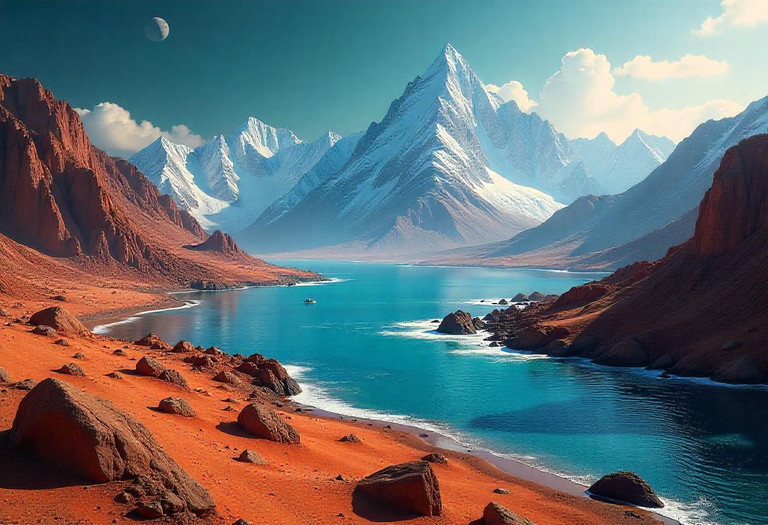Ancient Mars was not reddish, it was blue and white

The surface of Mars is about 144.4 million square km, that is about 14 and a half times the surface of the United States or 14 and a half times the surface of China, which is more or less similar, it is almost the same surface as that of all the continents of the Earth, although currently Mars is a gigantic dry and cold desert, but it maintains reserves of frozen water at the poles in some areas underground and a few meters from the surface we also know that there are reserves of water ice.

An investigation takes us to the University of Colorado Boulder, it was published on April 21 and there is another with a few days of separation that one helps the other, one explains the problem that this one has, specifically, this investigation of April 21 is from a new study by geologists from the University of Colorado in Boulder presents an image of the red planet not red, in the past Mars must have been a blue planet due to seas, lakes, rivers and white, because it snowed a lot, it was warmer and more humid but it also snowed in abundance, In fact, the analysis that these geologists did is that these precipitations of both rain and snow were what sculpted numerous valleys and channels, molding the Martian surface billions of years ago.

Within 1 billion years we humans will no longer be there and if there is a species, it will be a species that has evolved from humans, who knows where we will be as humanity, this evolution is going little by little, but in the past billions of years ago the sun emitted less heat, less radiation, therefore, Mars in theory should have been even colder than today.
The images without reference were created with AI
Thank you for visiting my blog. If you like posts about #science, #planet, #politics, #rights #crypto, #traveling and discovering secrets and beauties of the #universe, feel free to Follow me as these are the topics I write about the most. Have a wonderful day and stay on this great platform :) :)
Thanks for your contribution to the STEMsocial community. Feel free to join us on discord to get to know the rest of us!
Please consider delegating to the @stemsocial account (85% of the curation rewards are returned).
Consider setting @stemsocial as a beneficiary of this post's rewards if you would like to support the community and contribute to its mission of promoting science and education on Hive.